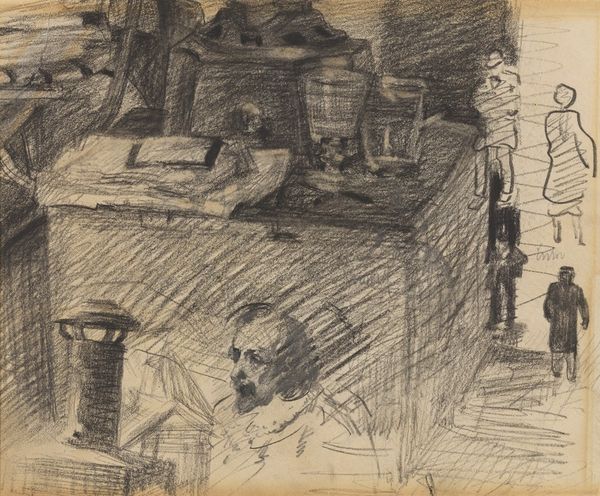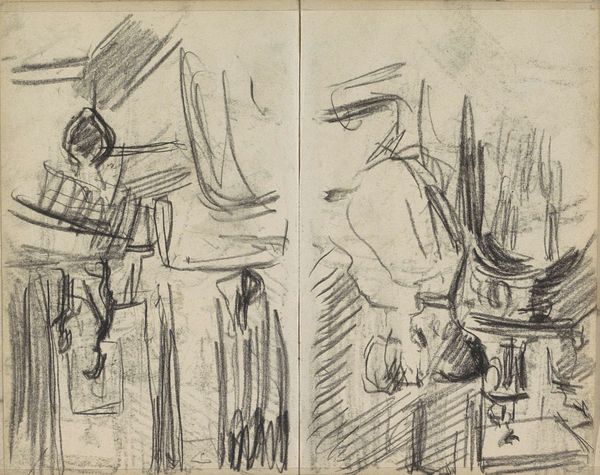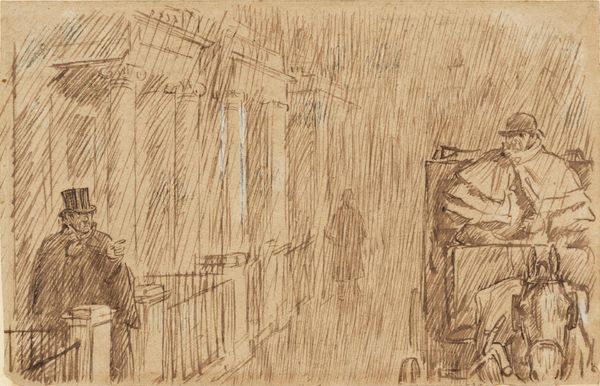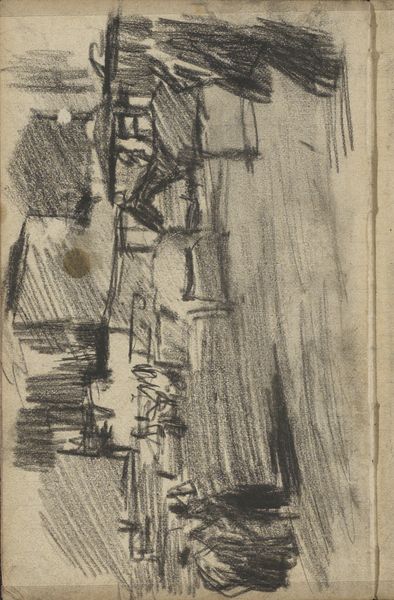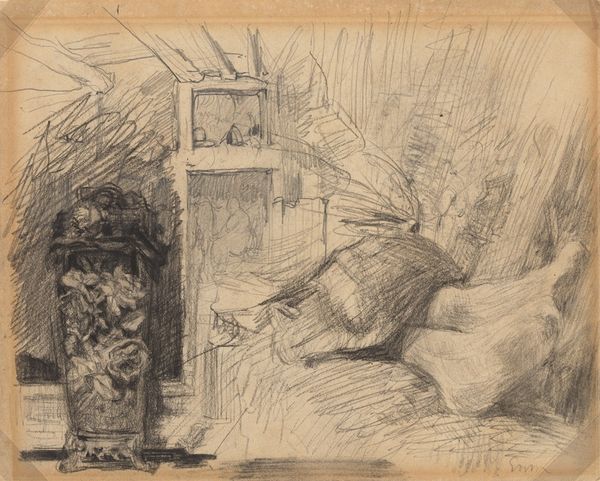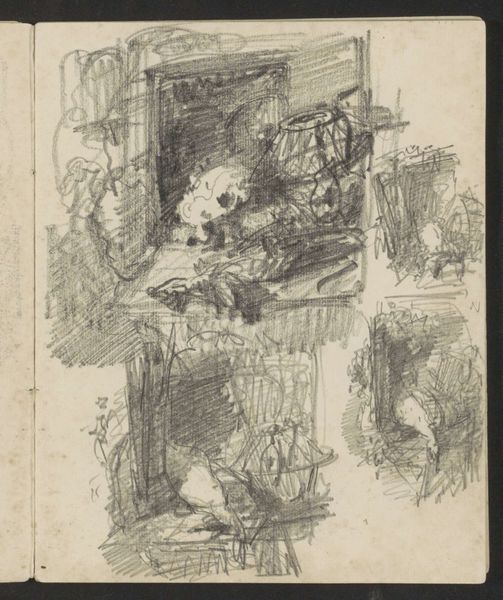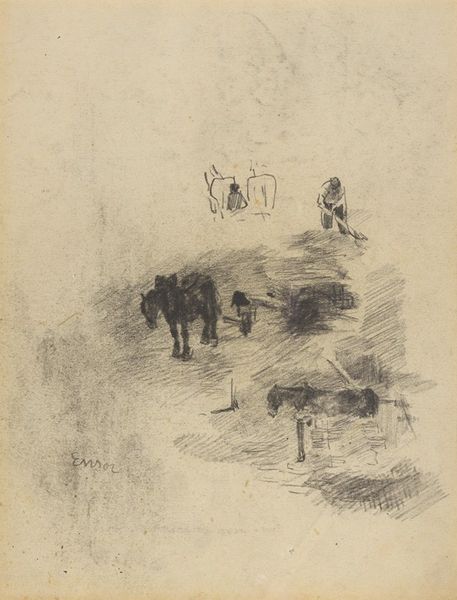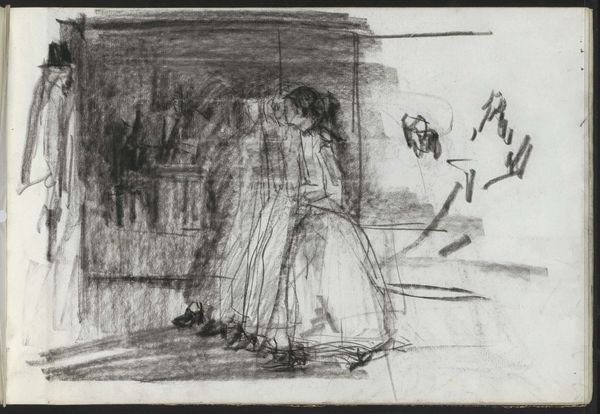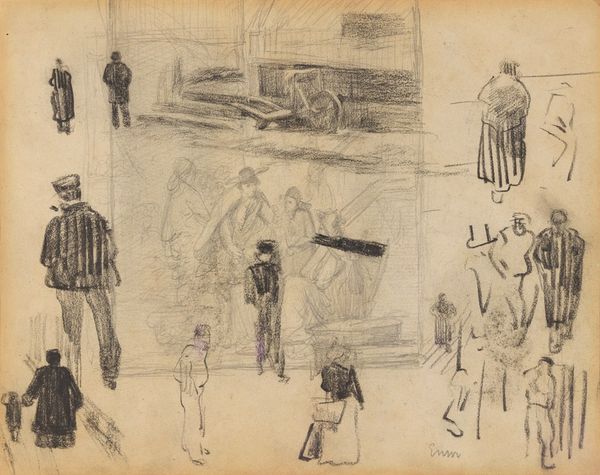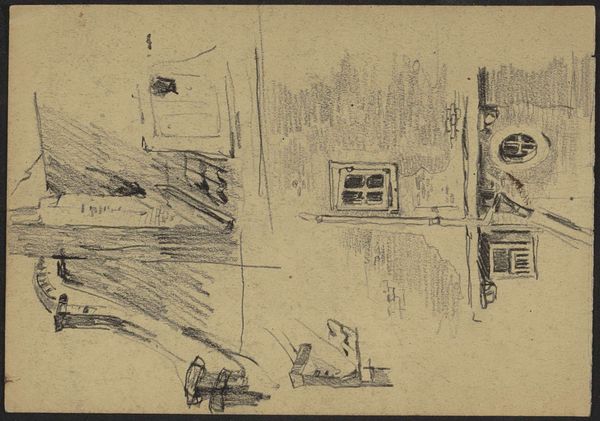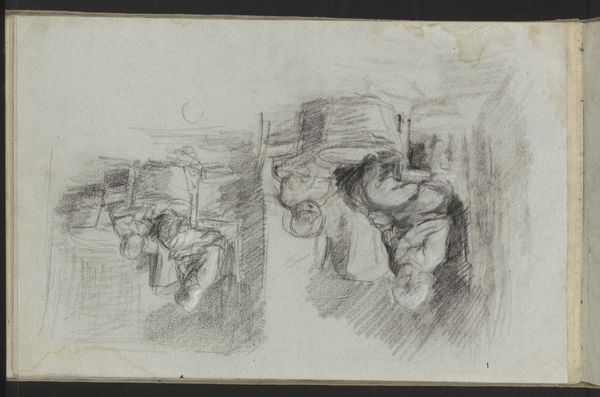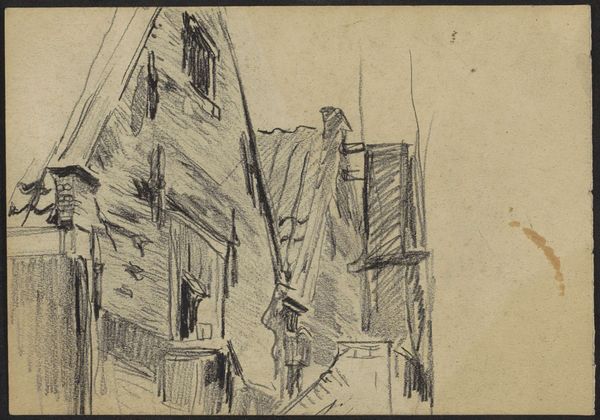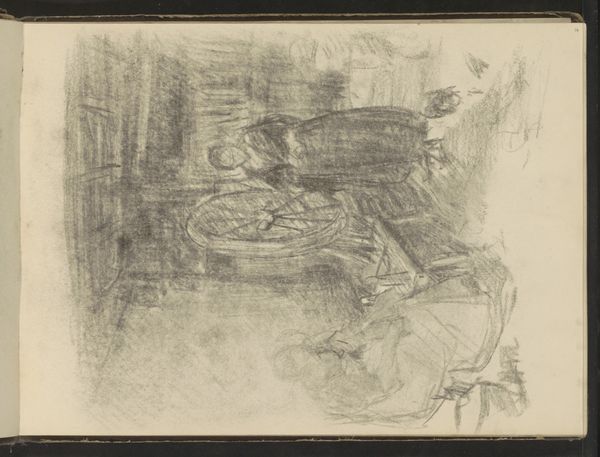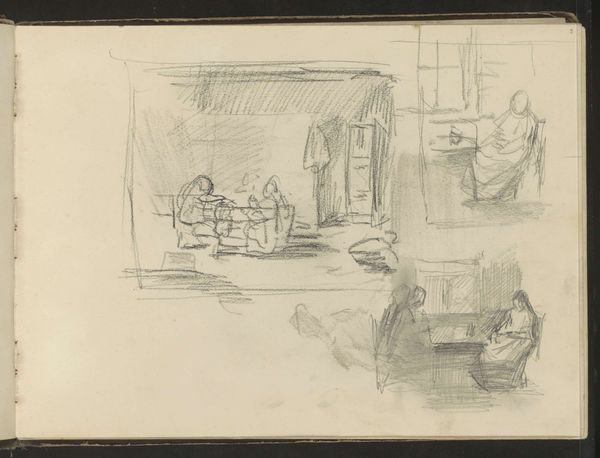
drawing, pencil
#
portrait
#
drawing
#
impressionism
#
figuration
#
pencil
#
genre-painting
Copyright: Public Domain: Artvee
Curator: So, here we have James Ensor's "Fan, Lamp and Figures," a pencil drawing from the 1880s. Editor: It’s interesting! The figures seem almost like preliminary sketches crowding around a much more defined lamp and fan. How do you interpret this work? Curator: Well, consider the context. Ensor was working during a period of significant industrial and social change. This drawing, for me, isn't simply about representation. It uses readily available and affordable graphite and paper as materials to record the burgeoning middle class of Belgium at the time. He pictures these materials in a still life with figures like any other product on display and ready to be traded. Notice how the drawing focuses on representing commodities that have been extracted from materials that exist around the world. What might this aggregation of consumer items be saying? Editor: It’s like he's displaying a culture consumed by new things? Is Ensor critiquing this wave of consumerism? Curator: Precisely! He shows that the lamp, the fan, and, by implication, even the figures can be conceived in terms of production and distribution. Ensor asks us to consider art itself as subject to those same forces. What do you make of the varying degrees of finish and shadow? Editor: The sketch-like figures feel very disposable compared to the lamp. It seems the production quality increases with how artificial the items get. I hadn't thought about art in this way before - where it's also affected by consumerism. Curator: Right. So maybe, "Fan, Lamp and Figures" is about more than just a pretty scene; it reflects the labor and material conditions of its time. It's less about *what* is represented and more about *how* and *why*.
Comments
No comments
Be the first to comment and join the conversation on the ultimate creative platform.
